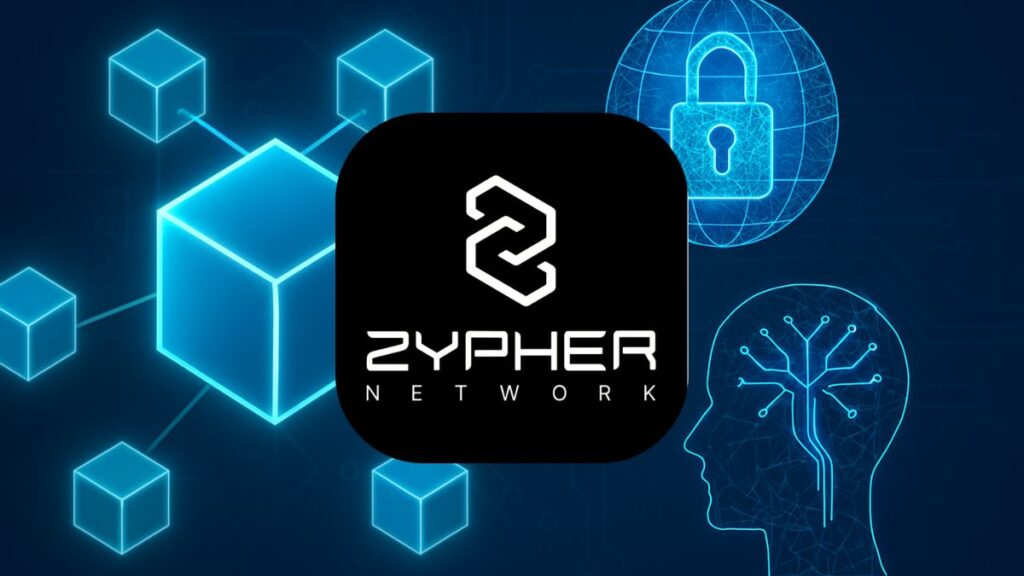Zypher Network is a blockchain initiative gaining recognition for its innovative approach to decentralized infrastructure. Positioned within the evolving Web3 landscape, it emphasizes adaptability, scalability, and integration. By attracting attention from developers, investors, and analysts, Zypher is shaping conversations about the future of decentralized applications and digital ecosystems.
What is Zypher Network?

A New Layer for Decentralized Finance
Zypher Network is an emerging blockchain ecosystem designed to enhance the efficiency and scalability of DeFi. Built with interoperability at its core, the project aims to connect multiple chains and provide seamless liquidity solutions for users and developers. Unlike traditional networks that often struggle with congestion and high fees, Zypher introduces a framework that prioritizes speed, cost-effectiveness, and accessibility.
Its infrastructure is tailored to support dApps across various sectors, including trading, lending, and asset management. By focusing on cross-chain compatibility, Zypher positions itself as a unifying layer in the fragmented blockchain landscape.
Core Infrastructure and Technology
The network leverages advanced consensus mechanisms and modular architecture to ensure security and scalability. Its design allows developers to build applications without facing the limitations of single-chain ecosystems. Zypher integrates smart contract functionality with enhanced throughput, enabling faster transaction settlement and reduced costs.
Additionally, the platform emphasizes user-friendly tools for developers, lowering the barrier to entry for new projects. This technical foundation not only supports DeFi protocols but also opens opportunities for gaming, NFTs, and enterprise blockchain solutions.
Governance and Ecosystem Growth
Zypher Network incorporates decentralized governance, allowing community members to participate in decision-making processes. This model ensures that upgrades, protocol changes, and ecosystem initiatives reflect the interests of its stakeholders. The governance framework is structured to encourage transparency, accountability, and long-term sustainability. As adoption grows, Zypher’s ecosystem is expected to expand with partnerships, integrations, and developer-driven innovation.
Token Utility and Market Role
The Zypher ecosystem is supported by its native token, which plays a role in governance, transaction fees, and incentivizing network participation. While the token is an essential component, the project’s broader vision extends beyond simple utility. By combining technical innovation with community-driven growth, Zypher Network seeks to establish itself as a foundational layer for the next generation of decentralized applications.
How Does Zypher Network Work?

Multi-Layered Architecture
Zypher Network operates through a multi-layered design that separates execution, consensus, and data availability. This structure allows the system to process transactions efficiently while maintaining security and decentralization. By decoupling these layers, Zypher can handle high volumes of activity without compromising stability. The architecture is optimized to support diverse applications, ensuring that developers and users experience consistent performance across different use cases.
Cross-Chain Connectivity
A defining feature of Zypher is its ability to connect with multiple blockchains simultaneously. Through advanced bridging protocols, the network enables assets and data to move seamlessly between ecosystems. This interoperability reduces fragmentation and allows users to access liquidity and services beyond a single chain. Developers can design applications that leverage resources from various blockchains, creating a more integrated and versatile environment for decentralized finance, gaming, and enterprise solutions.
Smart Contract Execution
Zypher incorporates a high-performance virtual machine that executes smart contracts with speed and precision. The system is designed to minimize latency, ensuring that decentralized applications run smoothly even under heavy demand. Developers benefit from compatibility with widely used programming standards, making it easier to migrate or expand existing projects. This execution layer is reinforced with security protocols that safeguard against vulnerabilities, providing a reliable foundation for innovation.
Developer and User Tools
To encourage adoption, Zypher offers a suite of tools that simplify interaction with the network. These include intuitive APIs, software development kits, and analytics dashboards that provide insights into performance and usage. For end users, the network delivers streamlined interfaces that make accessing decentralized applications straightforward. By lowering technical barriers, Zypher fosters a more inclusive ecosystem where both experienced developers and newcomers can participate effectively.
What is the POP Token?

Overview of POP
The POP token is the official digital asset of the Zypher Network, designed to serve as the backbone of its ecosystem. Built on the ERC-20 standard, POP ensures compatibility with a wide range of wallets, exchanges, and decentralized applications. Its fixed supply model provides predictability, while its multi-chain deployment strategy enhances accessibility across different blockchain environments. POP is not just a transactional unit but a versatile instrument that underpins the network’s broader functionality.
Tokenomics of POP
According to available market data, POP has a maximum supply of 10 billion tokens, with approximately 1.43 billion currently in circulation. This represents about 14.4% of the total supply. The project’s fully diluted valuation (FDV) is estimated at around $104 million, while its market capitalization stands at $15 million. POP also records a 24-hour trading volume exceeding $295 million, highlighting strong liquidity relative to its market cap.
These figures suggest that while the token is still in its early stages of adoption, it benefits from significant trading activity and accessibility across multiple exchanges. The structured supply and active market presence provide a foundation for long-term ecosystem growth.
Is the POP Token a Good Investment?
The investment outlook for POP depends on the expansion of Zypher Network and the broader blockchain market. Its tokenomics indicate a capped supply, active circulation, and high liquidity, which can be favorable for long-term sustainability. However, like all cryptocurrencies, POP is subject to volatility, regulatory changes, and competition from other projects.
Investors should carefully evaluate Zypher’s roadmap, adoption rate, and their own risk tolerance before considering exposure. While POP’s role within Zypher’s infrastructure is strategic, its market performance will ultimately be shaped by adoption and sentiment.
Market Relevance
POP has gained traction in the digital asset market due to its role in supporting Zypher’s expanding ecosystem. Its presence on centralized and decentralized exchanges provides liquidity and accessibility for global participants. As adoption of Zypher Network grows, demand for POP is expected to reflect the increasing utility of the platform. Positioned as both a functional and strategic asset, POP represents a key component in the evolution of Zypher’s decentralized infrastructure.
Conclusion
Zypher Network stands out as a project shaping discussions around the future of decentralized ecosystems. By combining innovation with growing market presence, it has positioned itself as a noteworthy contender in the blockchain space, drawing attention from developers, investors, and communities seeking scalable and adaptable digital solutions.










